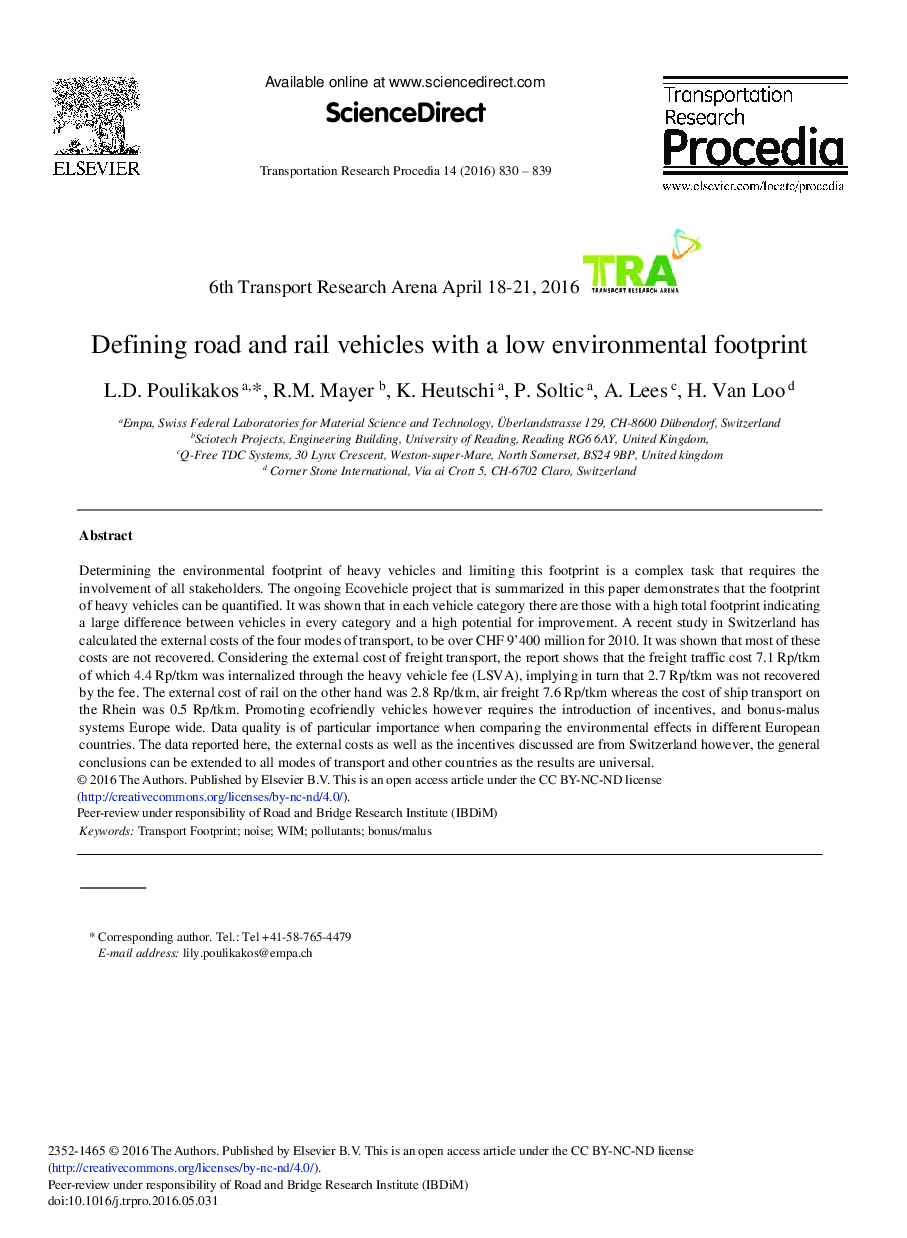| Article ID | Journal | Published Year | Pages | File Type |
|---|---|---|---|---|
| 1106272 | Transportation Research Procedia | 2016 | 10 Pages |
Determining the environmental footprint of heavy vehicles and limiting this footprint is a complex task that requires the involvement of all stakeholders. The ongoing Ecovehicle project that is summarized in this paper demonstrates that the footprint of heavy vehicles can be quantified. It was shown that in each vehicle category there are those with a high total footprint indicating a large difference between vehicles in every category and a high potential for improvement. A recent study in Switzerland has calculated the external costs of the four modes of transport, to be over CHF 9’400 million for 2010. It was shown that most of these costs are not recovered. Considering the external cost of freight transport, the report shows that the freight traffic cost 7.1 Rp/tkm of which 4.4 Rp/tkm was internalized through the heavy vehicle fee (LSVA), implying in turn that 2.7 Rp/tkm was not recovered by the fee. The external cost of rail on the other hand was 2.8 Rp/tkm, air freight 7.6 Rp/tkm whereas the cost of ship transport on the Rhein was 0.5 Rp/tkm. Promoting ecofriendly vehicles however requires the introduction of incentives, and bonus-malus systems Europe wide. Data quality is of particular importance when comparing the environmental effects in different European countries. The data reported here, the external costs as well as the incentives discussed are from Switzerland however, the general conclusions can be extended to all modes of transport and other countries as the results are universal.
